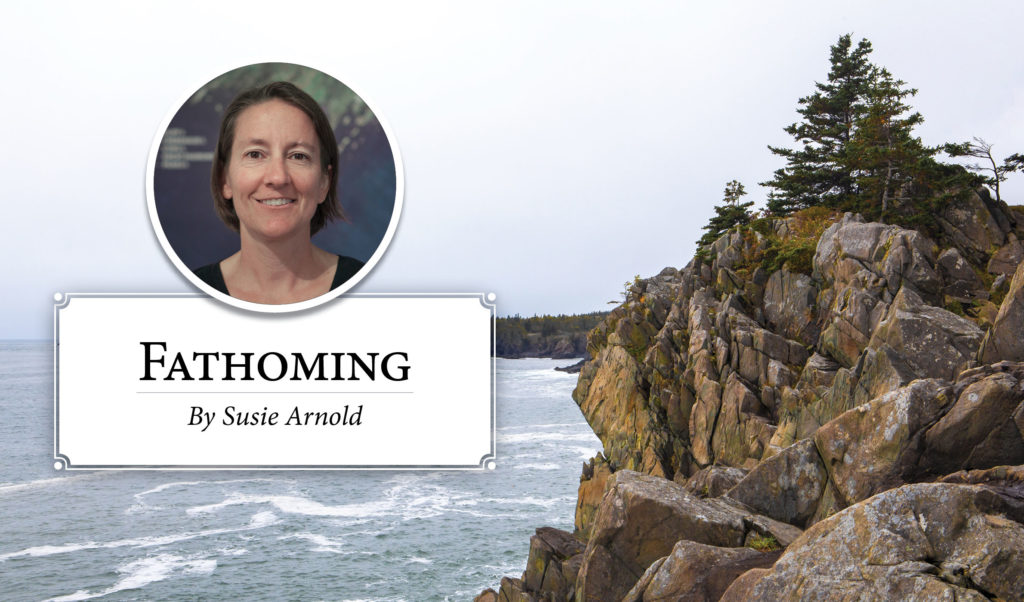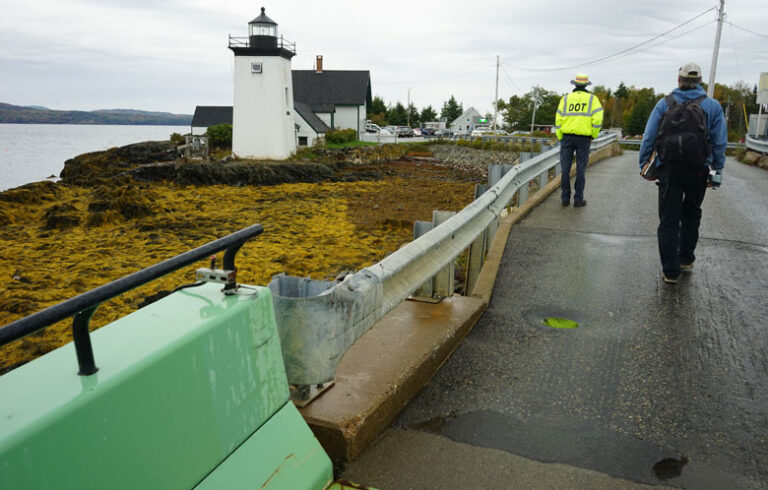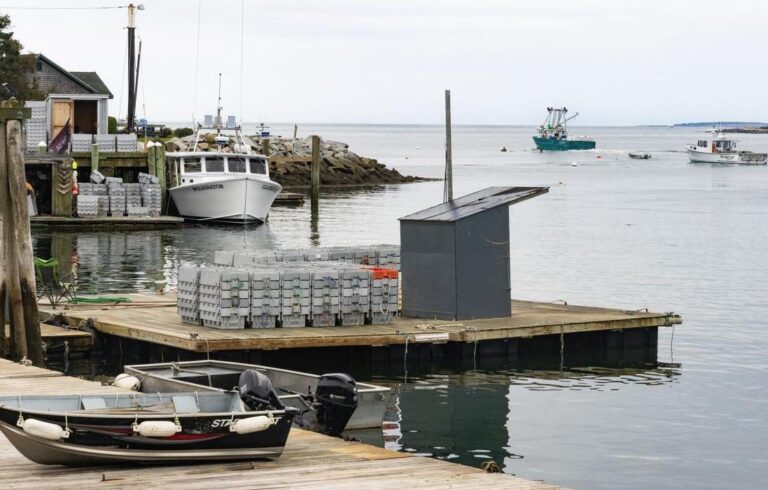By Susie Arnold
Determining Maine’s carbon budget is a key first step in meeting Gov. Janet Mill’s 2019 pledge of achieving carbon neutrality by 2045. Recent estimates coming out of the Maine Climate Council point to an under-recognized asset in the quest to becoming “carbon neutral”—vegetated coastal ecosystems.
Carbon neutrality essentially means the state’s emissions (which are slated to be cut by 45 percent by 2030 and 80 percent by 2050, below 1990 levels) are absorbed by local carbon sinks or offset (through the purchase of carbon offsets).
The growth of Maine’s vast forests, which make up 89 percent of our land, plays a major role in capturing and long-term storage of carbon. But, it turns out that Maine’s coastline is also home to other less well-known carbon sinks—and they pack a punch. These habitats are termed coastal “blue carbon” and, in Maine, include saltmarshes, seagrasses, and seaweeds.
Preliminary analysis from the Climate Council’s Coastal and Marine Working Group estimates salt marshes and seagrass meadows occupy less than 0.1 percent of the state, but have the potential to bury 1-6 percent of the total carbon sequestered each year.
“The healthier the system, the higher the rates of carbon sequestration,” says Beverly Johnson, geology professor at Bates College.
In much the same way that our forests capture carbon dioxide in the atmosphere through photosynthesis and store carbon in soils, marsh and seagrasses remove carbon dioxide through photosynthesis from their surrounding environment. Most of the carbon ends up in their roots and rhizomes and is buried and “sequestered” for centuries to millennia.
Seaweeds, like rockweed and kelp, were previously thought to have the ability to only temporarily take up carbon, since they lack roots, but rather attach to intertidal or subtidal rocks via holdfasts. Recent studies, however, indicate that up to 16 percent of these seaweeds break off and ultimately end up buried in the deep ocean, opening up a vast and yet-to-be quantified potential for storing carbon.
Because coastal blue carbon ecosystems are underwater for part or all of the tidal cycle, they also remove carbon dioxide from seawater. A quarter to a third of all atmospheric carbon dioxide ends up in the ocean, causing it to become more acidic. The uptake of carbon dioxide by kelp and seagrasses locally remediates ocean acidification in addition to the sequestration benefits.
Furthermore, Bigelow Laboratory for Ocean Sciences is investigating whether seaweeds as a feed additive for livestock can reduce their methane burps, a major source of emissions from the agriculture sector.
According to Nichole Price, a researcher at Bigelow, “Given the length of Maine’s coastline, extensive tidal marshes, the market potential for seaweeds to bolster our working waterfront economy, and the fact that submerged aquatic vegetation sequesters carbon more efficiently than forests, blue carbon represents both profit and purpose for Maine.”
A project in the port of Seattle is aimed at enhancing blue carbon infrastructure and quantifying the benefits. In 2019, both bull kelp and eelgrass were planted to trap carbon, reduce ocean acidification, and along with three tons of seeded oyster shells, improve water quality. The project is being monitored to see if it can sequester 10 tons of carbon per year.
Maintaining and restoring these coastal habitats are already of high importance for their “ecosystem services.” These include their natural capacity to support biodiversity, benefit fisheries, improve water quality, act as flood storage and storm barriers, remediate coastal acidification, and enhance tourism and recreation.
Fully unveiling the role coastal habitats play in carbon sequestration could elevate the priority of their management.
In addition to the difficult-to-monetize ecosystem service role of blue carbon, there is opportunity in the voluntary global carbon market. Companies such as Gold Standard evaluate offset projects and act as benchmarks in carbon markets. Determining how to position Maine to trade blue carbon offsets may be an important next step if funding for some management strategies is uncertain.
Work must be done to maximize the potential of these ecosystems.
“We know that almost half of saltmarshes are restricted,” says Claire Enterline of the Maine Coastal Program. Success for the climate council’s work on saltmarshes, says Kristen Puryear, an ecologist at Maine Natural Areas Program, would mean “increased restoration of tidal marshes impaired by road crossings, allowing them to migrate with sea level rise, preventing their degradation, and supporting resiliency of saltmarsh natural communities.”
Ultimately, coastal blue carbon ecosystems are highly efficient at burying carbon—even more than forests. Through conservation, restoration, and intentional land-use and aquaculture practices, we can optimize the suite of services these ecosystems provide and illustrate the win-win outcomes of these actions.
Susie Arnold is a marine scientist at the Island Institute (publisher of The Working Waterfront), working on the impacts of climate change and ocean acidification on marine resources and fisheries-dependent communities.





